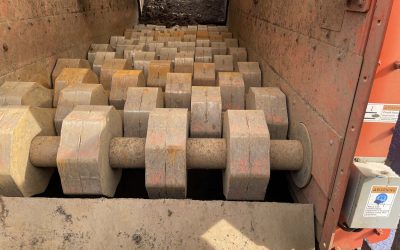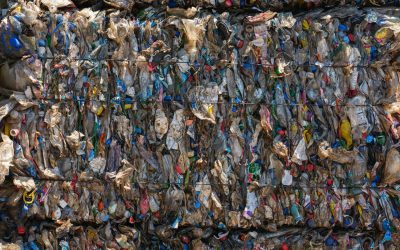As single-stream recycling becomes the standard for many communities, the need for efficient sorting technology has never been greater. Unlike traditional recycling methods that require materials to be separated at the source, single-stream recycling allows paper, plastics, metals, and glass to be collected together. While this system makes recycling more convenient for consumers, it presents challenges for facilities that must sort and process a high volume of mixed materials quickly and accurately.
In this article, we’ll explore the importance of disc screens in single-stream recycling facilities.
What are Disc Screens?
Disc screens are a type of mechanical separation equipment used in solid waste recycling facilities to efficiently sort materials based on size and shape. They consist of a series of rotating shafts with evenly spaced discs that agitate and move materials forward while allowing smaller items to fall through the gaps.
This screening process helps separate recyclables from contaminants and ensures that materials are properly sorted before further processing.
How Disc Screens Work in Single-Stream Recycling
As mixed recyclables move across the rotating discs, different materials follow distinct paths.
- Paper and cardboard: larger, lightweight materials, like newspaper and corrugated cardboard, move across the screen
- Small contaminants: tiny debris, such as broken glass and dirt, fall through the gaps between the discs, reducing contamination in the recycling stream
- Rigid plastics and metals: larger recyclable containers, such as plastic bottles and aluminum cans, move forward to additional sorting stations
Benefits of Disc Screens in Single-Stream Recycling
- Improved sorting efficiency: by separating materials early, disc screens streamline downstream processing, reducing manual sorting needs
- Reduced contamination: disc screens help improve the quality of recovered materials by filtering out smaller non-recyclable debris
- Increased recovery rates: properly sorted materials increase the chances of successful recycling, reducing waste sent to landfills
- High throughput processing: disc screens can handle large volumes of recyclables quickly, making them ideal for high-capacity material recovery facilities (MRFs)
- Lower labor costs and safer working conditions: facilities can reduce their reliance on manual labor for separation, lowering labor costs and improving workplace safety
- Increased equipment longevity: by removing contaminants early, disc screens help protect downstream equipment (such as shredders, balers, and optical sorters) from excessive wear and tear
Enhancing Material Separation with the Freedom Disc Screen
The Freedom Disc Screen is designed to improve efficiency and material separation in solid waste recycling by offering advanced screening technology with minimal maintenance requirements. Its unique design reduces material wrapping and clogging, which are common issues in traditional disc screens. This leads to higher throughput, improved material purity, and reduced downtime.
Reach out to us for more information today.


